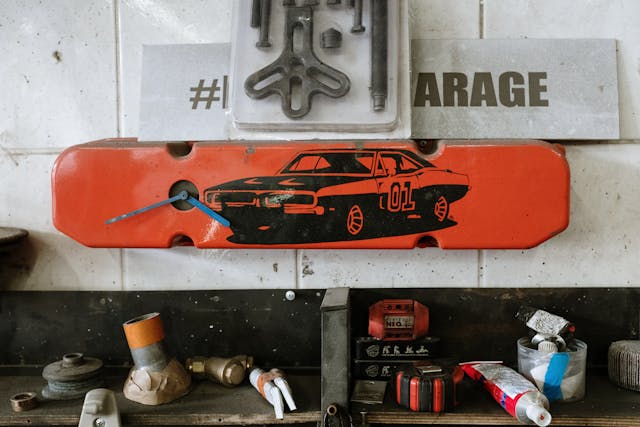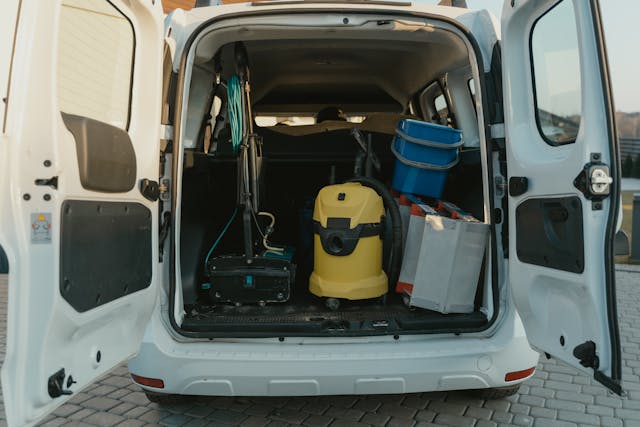Keeping your garage floor clean and well-maintained is essential for preserving the overall appearance and functionality of your garage space. Whether you use your garage for parking your car, as a workshop, or as a storage area, the floor inevitably takes a beating from dirt, oil, chemicals, and water. This guide will provide practical solutions to help you maintain a spotless garage floor, ensuring it remains in excellent condition for years to come.
The Importance of Garage Floor Maintenance
A garage floor, like any surface in your home, needs regular care and attention to prevent it from deteriorating. Without proper maintenance, the floor can become stained, slippery, or even damaged, which could lead to costly repairs. Additionally, a dirty and damaged garage floor creates an unappealing space and can reduce the value of your home if you ever plan to sell. By taking a few simple steps, you can keep your garage floor spotless and functional, regardless of the conditions outside.
Step 1: Invest in Quality Garage Flooring Solutions
One of the most effective ways to protect your garage floor is by investing in durable flooring solutions. There are several options available, depending on your specific needs and budget. Some homeowners prefer epoxy coatings or sealants, which provide a protective layer over the concrete floor, making it easier to clean and resistant to stains. Others may opt for interlocking floor tiles, which offer a customisable and removable flooring system that can be tailored to your garage’s needs.
For those looking to protect their garage from water, mud, and snow, a containment mat is an excellent option. These mats are designed to capture liquids and debris, keeping them from spreading across the floor. They are especially useful during winter when snow and ice can create a wet and slippery surface in the garage. Containment mats are easy to clean and can be rolled up and stored when not in use.
Step 2: Sweep and Clean Regularly
The simplest way to keep your garage floor clean is by sweeping and cleaning it regularly. Dust, dirt, and leaves can quickly accumulate on the floor, especially if the garage door is frequently opened. Sweeping at least once a week can prevent dirt from building up and becoming embedded in the floor’s surface.
When it comes to deeper cleaning, a basic mop and bucket of warm water mixed with a mild detergent will usually suffice. For oil stains or tougher grime, consider using a degreaser specifically designed for garage floors. Always ensure that the cleaning product you use is compatible with your flooring material to avoid damage.

Step 3: Prevent Oil and Chemical Stains
Oil and chemical spills are common in garages, especially if you perform car maintenance or DIY projects. These substances can quickly seep into concrete and cause unsightly stains that are difficult to remove. To prevent this, place a drip pan or tray under your vehicle or workspace where oil or chemicals are likely to spill.
If you do encounter a spill, it’s essential to clean it up as quickly as possible. For fresh oil spills, use an absorbent material like kitty litter or sawdust to soak up the liquid before wiping the area clean with a degreaser. For older, stubborn stains, there are specific products available that are designed to break down and remove oil from concrete surfaces.
Step 4: Control Moisture in the Garage
Moisture can cause significant problems for garage floors, particularly in humid climates or during rainy seasons. Excessive moisture can lead to mould growth, corrosion, and even structural damage to the floor over time. To keep moisture levels in check, ensure that your garage is well-ventilated by opening windows or using a fan to increase air circulation.
Another option is to use a dehumidifier, especially in areas prone to high humidity. Additionally, ensure that your garage floor slopes slightly towards the door to allow water to flow out instead of pooling inside. If water is still a concern, installing a containment mat can help capture any moisture, keeping the rest of the garage dry.
Step 5: Organise Your Garage to Prevent Mess
A cluttered garage can make it difficult to keep the floor clean, as items are more likely to be knocked over or create obstacles that trap dirt and debris. One of the simplest ways to prevent mess is by organising your garage effectively. Install shelving or cabinets to keep tools, equipment, and other items off the floor. Pegboards and hooks can also be useful for storing items like bikes, hoses, and gardening tools.
In addition to reducing clutter, keeping your garage organised makes cleaning the floor easier, as you won’t need to move things around constantly to sweep or mop.
Step 6: Use Door Seals to Keep Debris Out
One of the most overlooked solutions for keeping a garage floor spotless is installing high-quality door seals. These rubber or vinyl strips attach to the bottom of the garage door and prevent leaves, dirt, water, and pests from entering. Door seals are particularly useful if you live in an area with high winds or if your garage is near trees and vegetation.
By sealing the gap between the door and the floor, you can significantly reduce the amount of debris that gets tracked into your garage, cutting down on cleaning time.
Step 7: Consider Weather-Appropriate Solutions
If you live in an area that experiences heavy snowfall or rain, it’s important to adapt your garage maintenance routine to suit the weather. Winter months bring snow, ice, and salt, all of which can damage your garage floor. Using a containment mat during the winter season can help trap water, snow, and salt before they spread across the garage.
In the summer, consider using mats or rugs at the entrance to the garage to wipe your feet and reduce the amount of dirt brought in from outside. Keeping a broom or leaf blower near the door can also help with quick clean-ups after a windy day.
Step 8: Address Cracks and Damage Early
Concrete garage floors are susceptible to cracks, especially in regions that experience freezing and thawing cycles. When water enters a crack, it can expand as it freezes, causing the crack to widen over time. It’s important to address any cracks or damage as soon as they appear to prevent further deterioration.
There are various concrete repair products available that can fill small cracks and holes, restoring the surface of the garage floor. For larger areas of damage, you may need to consult a professional for repairs.
Step 9: Choose the Right Tools for Cleaning
Using the right tools can make a significant difference when cleaning your garage floor. A stiff-bristled broom is ideal for sweeping, while a sponge mop can effectively clean spills or stains. For more challenging stains, consider using a pressure washer, which can remove dirt and grime from the surface without the need for harsh chemicals.
For more delicate flooring types, such as interlocking tiles or vinyl, ensure you use softer cleaning tools to avoid scratching the surface. Regular cleaning with the right tools will help maintain the appearance and functionality of your garage floor.

Step 10: Regular Maintenance for Long-Term Benefits
Maintaining a spotless garage floor requires regular attention, but the long-term benefits are well worth the effort. By following these simple steps, you can prevent damage, reduce the need for costly repairs, and keep your garage looking clean and organised. Whether you choose to invest in a containment mat, apply an epoxy coating, or simply sweep and mop regularly, consistency is key to preserving your garage floor for years to come.
Incorporating these solutions into your garage maintenance routine will not only protect your floor but also create a more enjoyable and functional space for all your projects and storage needs. A well-maintained garage floor is a reflection of a well-maintained home, so take the time to keep it in top condition.
For more tips on home improvement and maintenance, check out Mama the Fox for expert advice and innovative solutions. Additionally, learn about organising your garage space with solutions that can transform it into a clean, organised, and functional part of your home.
Conclusion
Maintaining a spotless garage floor may seem challenging, but with the right tools and a consistent cleaning routine, you can achieve a clean and functional space. Investing in quality garage floor solutions like a containment mat, regularly sweeping and cleaning, and organising your garage can make a significant difference in the longevity and appearance of your garage floor. Keeping moisture and debris out, addressing damage early, and preparing for different weather conditions are key to ensuring your garage remains a clean and functional part of your home.